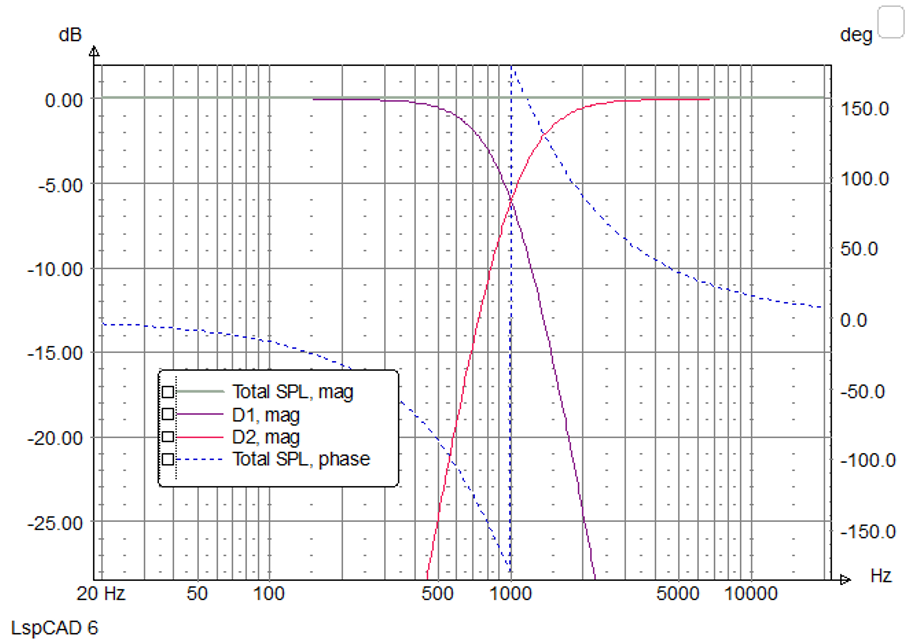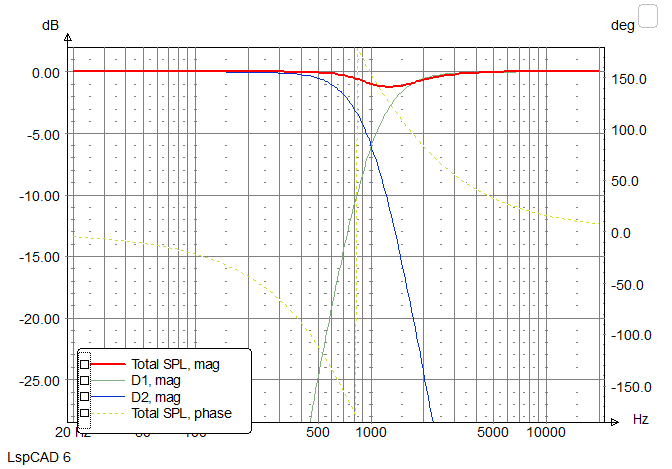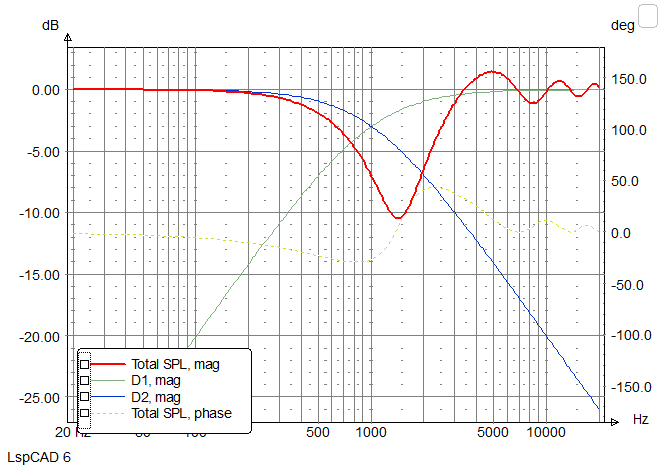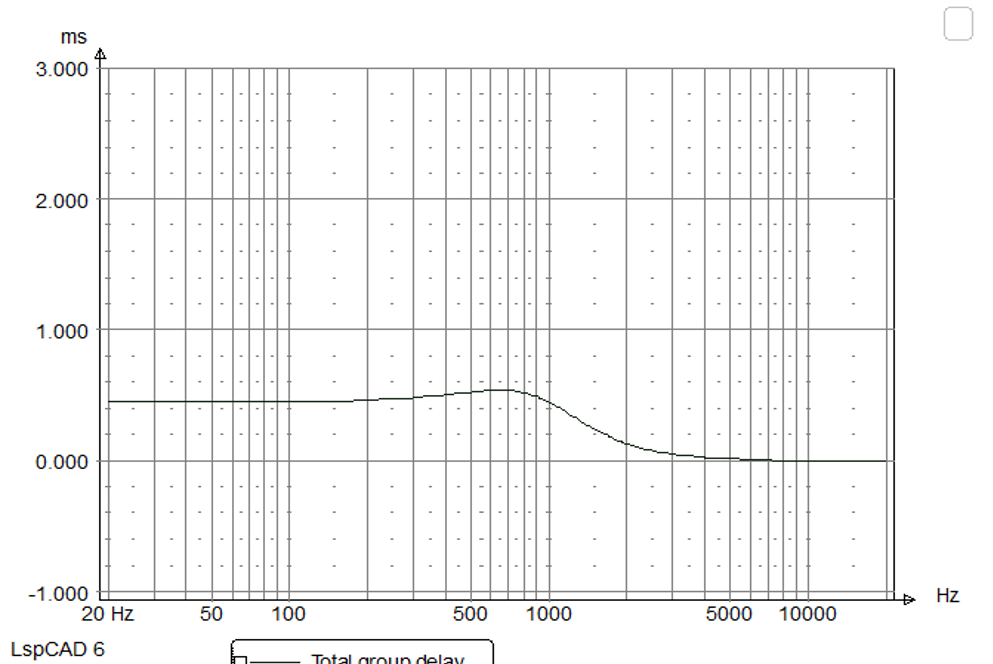What makes 6dB filters so special
First of all, it is important to realize that every crossover filter is a compromise. There is no free lunch and therefore it is important to know about the compromises.
One of the most popular crossover topologies is the 4th order LKR filter.
Properly designed, it adds together two drivers nicely, as there is no phase shift. This allows very nice imaging with only little overlap between the drivers.
At the crossover point, both drivers are down 6dB……that also means that the overall radiated power in the crossover region is somewhat reduced (3dB). Above and below the listening position, the level drops. That is not necessarily bad, as nobody is keen on reflections from the ceiling or the floor of a room. In case of a 2-way system, it also helps with the hard break in directivity.: the woofer normally beams already, but the tweeter radiated wide. With carefully chosen filtering, you can get great results.

4th order LKR filterThere is another negative “feature” of any higher-order filter is the group delay. This describes how much time the signal needs to travel through the filters. One could think, this is time is constant over frequency, but it’s not. The graph below shows the group delay of the filter shown above.
It can bee is seen that the lower frequency part takes around 0.4ms longer than the tweeter part. At the crossover frequency, there is an extra small delay. Again, this happens with all filters and the delay changes with filter order and type of filter. And this is true for all filters – electrical or acoustic filters. This behaviour has nothing to do with the possible mechanical offset of woofer and tweeter,
Now back to the first-order filter. This filter shows only a very limited filter functionality with big overlapping.

In this filter, the level is down 3dB at the crossover point and properly done, should give a very even power response. Both drivers are in phase,.
Looking at the group delay, it can be seen that both drivers combined don’t show any group delay!

So does a 6dB also have some negative points? Yes, as said before, there is no free lunch. The first problem is covered in an earlier article, showing how to make a 6dB slope for a real-world drive unit. No easy task.
The next big problem is the position of the drivers in relation to each other. Only a perfect mechanical time alignment gives a good result. Moving the driver position only 5cm (mechanical offset of a driver or different height at the listening position) kills the whole idea of the 6dB topology.
Below the behaviour of our 4th order LKR filter with 5cm offset between the drivers and the same for the first-order filter


The next simulation shows the combination of two drivers, but now the other driver is delayed. Here the 4th order crossover:

As can be seen, the result is very similar, meaning that the effects are symmetric. Now the same with 6dB crossover:

This time, we are getting a suck-out at the crossover frequency and the result looks wired. Maybe this makes you understand why some speaker measurements are looking so wired without sounding completely broken.
Conclusion
The 6dB crossover has some nice benefits, but they are not easy to realise in a product. Nowadays, simple crossovers with only one component per driver are called 6dB, but this is not really true, as only the combination of acoustic behaviour and electrical filter gives you the benefit of first order. The only company, who really used the true 1st order crossover is no longer in business. Time to do it again.

